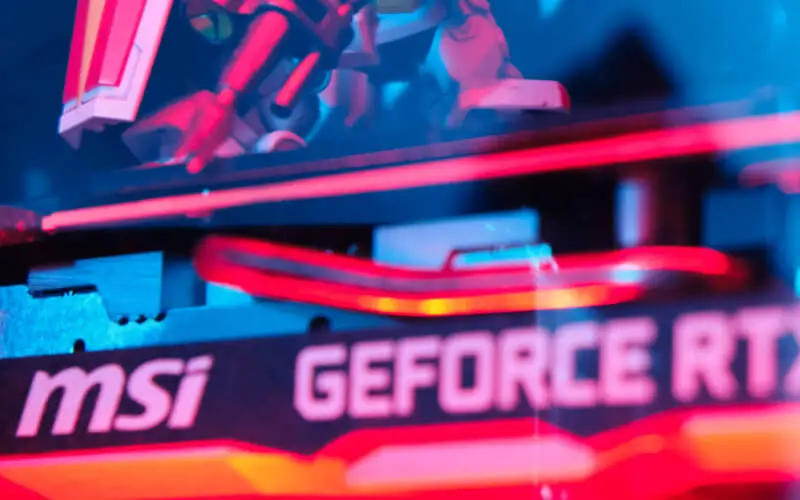I’ve had my fair share of hardware issues as a computer enthusiast. One problem that I’ve encountered multiple times is GPU overheating.
If you’re a gamer or use your computer for resource-intensive tasks, you know how frustrating it can be when your GPU overheats and causes your system to crash.
Fortunately, there are several steps you can take to fix this issue and keep your GPU running smoothly. In this article, I’ll walk you through some of the most effective ways to prevent and fix GPU overheating.
What are the Causes of GPU Overheating?
Before we dive into the solutions, let’s take a look at some of the most common causes of GPU overheating:
- Dust and dirt build-up: Over time, dust and dirt can accumulate on your graphics card and block airflow, causing it to overheat.
- Insufficient cooling: If your graphics card doesn’t have a good cooling system or is not functioning correctly, it can cause the card to overheat.
- Overclocking: If you’ve overclocked your graphics card, it may run at higher temperatures than it was designed to handle.
- Faulty hardware: In some cases, the graphics card may be faulty and cause overheating issues.
How to Prevent GPU Overheating?
The best way to fix graphics card overheating is to prevent it from happening in the first place. Here are some steps you can take to keep your graphics card running cool:
1. Keep Your Computer Clean
Keeping your computer clean is one simplest and most effective ways to prevent GPU overheating. Dust and dirt build-up can block airflow and prevent your graphics card from staying cool.
To clean your computer, you’ll need to open up the case. Make sure to power off your computer and unplug it before doing this. Then, use a can of compressed air to blow out any dust and debris from inside the case.
Pay special attention to the graphics card, as this is where most of the dust tends to accumulate.
Related: How to Fix GPU Fans Not Spinning
2. Make Sure Your Computer Has Adequate Cooling
Proper cooling is essential for preventing GPU overheating. If your computer doesn’t have enough fans or the fans are not functioning correctly, your graphics card can overheat.
If you’re using a desktop computer, ensure you have at least one fan for every major component, including the processor, graphics card, and power supply. Laptops may be more difficult to upgrade in terms of cooling, but you can try using a cooling pad to help dissipate heat.
3. Avoid Overclocking
Overclocking is running your hardware at higher speeds than it was designed for. While it can provide a performance boost, it can also cause your hardware to run hot and potentially fail.
If you’re experiencing overheating issues, resetting your graphics card to its default clock speeds is a good idea. This can help stabilize your system and prevent further overheating issues.
4. Check for Faulty Hardware
If you’ve tried all the above steps and your graphics card is still overheating, the card may be faulty. In this case, you’ll need to replace the card to fix the issue.

How to Fix GPU Overheating?
If your graphics card is already overheating, there are a few steps you can take to try and fix the issue:
1. Clean Your Computer
As mentioned above, dust and dirt build-up can block airflow and cause your GPU to overheat. If you suspect this might cause your overheating issues, you should first clean your computer.
Follow the steps outlined above to open your computer and use a can of compressed air to blow out any dust and debris. Pay special attention to the graphics card and any other components that might be covered in dust.
2. Check Your Cooling System
If cleaning your computer doesn’t fix the issue, the next step is to check your cooling system. Ensure all your fans function correctly and are not obstructed by dust or debris.
If you’re using a desktop computer, consider adding additional fans to help improve airflow. You might also consider upgrading to a better cooling system, such as an all-in-one liquid cooler for your processor.
A cooling pad can help dissipate heat and prevent your graphics card from overheating for laptops.
3. Lower Your Graphics Settings
If your graphics card is overheating while playing games or running resource-intensive tasks, one solution is to lower your graphics settings. This will put less strain on the graphics card and can help reduce temperatures.
Of course, this isn’t a long-term solution, but it can help you get through a particularly demanding task until you can find a more permanent fix.
4. Replace the Graphics Card
If none of the above steps fix the issue, it’s possible that your graphics card is faulty and needs to be replaced. This can be costly, but if your card is causing frequent overheating issues, it’s probably the best option in the long run.
When shopping for a new graphics card, choose one with a good reputation for cooling. You might also consider a card with a built-in cooling system, such as a blower-style cooler or an all-in-one liquid cooler.
Related: How Long Do Graphics Cards Last?
Conclusion
GPU overheating can be a frustrating problem, but it can usually be fixed relatively easily. Following the steps outlined above, you should be able to prevent and fix overheating issues and keep your GPU running smoothly.
Remember to clean your computer, ensure proper cooling, avoid overclocking, and check for faulty hardware. If all else fails, consider replacing the graphics card. With a little care and attention, you can keep your graphics card running cool and avoid overheating issues.






